Owner Invoicing: Difference between revisions
Lwinchester (talk | contribs) No edit summary |
Lwinchester (talk | contribs) |
||
| Line 137: | Line 137: | ||
These details will be printed at the bottom of each invoice produced. See sample invoice report that follows: | These details will be printed at the bottom of each invoice produced. See sample invoice report that follows: | ||
=='''STKWHSE01A Warehouse Maintenance'''== | =='''STKWHSE01A Warehouse Maintenance'''== | ||
Revision as of 16:18, 13 September 2010
IN PROGRESS
INTRODUCTION
This document describes the screens that are required to set up the data for the invoicing of owners for warehouse services provided. Other guides describe the set up of company, user, warehouse, owners etc as well as the actual invoice generation process.
This is a generic guide based on the version of the SCE system at the time of writing.
It can also be used by clients to specify their specific data values to aid initial system set up as well as for future reference.
Note that fields marked ‘**’ are mandatory and are needed to ensure correct set up of the system.
- There are three types of owner invoicing available, at receipt, at despatch and Rent.
- Goods receipt charges are generated when goods are receipt confirmed. A screen will pop up showing the auto-created charges, and allowing additional charges to be entered.
- Despatch charges are created when an order is despatch confirmed. Again a screen pops up showing auto-created charges and allowing further manual charges to be entered.
- Three different rent calculations are supported:
- The average of the goods in the warehouse at the start and the end of the period.
- Goods in the warehouse at the start of the period plus all goods received during the period. Goods in the warehouse at the end of the period plus all goods despatched during the period.
- Rent charges are generated manually from a parameter screen for invoice cycle periods.
- The invoices are created manually from a parameter screen for the current invoice cycle. All uninvoiced owner charges, rent, receipt and despatch, are generated onto an invoice.
- To set up charging data, first create rate tables using WHS9160 Rate table maintenance. These can use a variety of breakpoint types, and support either fixed amounts (up to 10 pallets £X, 11-26 pallets £Y etc) or rates (up to 8 pallets £X/pallet, 9+ pallets £Y/pallet)
- Create charge codes that use the rate tables using WHS0330. Note that the business type must be set to be REC for Receipt, DES for Despatch and CYC (cycle) for Rent, and the charge level to header/detail/pallet. Only these charges are supported in the Owner Invoicing.
- In the Owner Maintenance, the charging tab must be filled in. The Invoice Type must be set to Invoice Cycle, and the Rent Mode set. For Rent you need to set up the invoice cycles which determine whether rent is charged in weekly, fortnightly, monthy cycles etc.
Overview
Below is the diagram of required screens to support the Owner Invoicing functionality
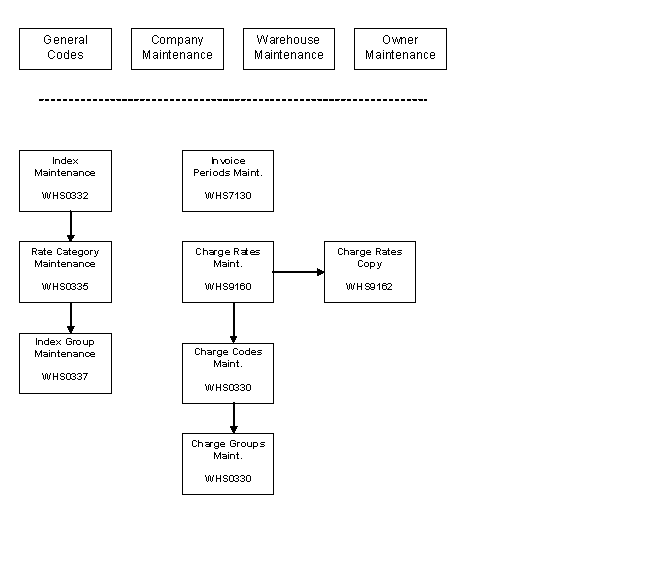
PRE-REQUISITE SYSTEM SET UP
In order for the Owner Invoicing to function there are a number of items of information required at Company, Owner and Warehouse level. The user is referred to the User Guides for these areas for full set up instructions for each of them but the relevant information is included here for ease of use of this guide.
PFS0260 – General Codes Maintenance
A pre-defined Code Type of ‘BUSN’ is used to control the setting of the 3 character BUSINESS TYPE codes to enable control of the various ‘In Process charges’
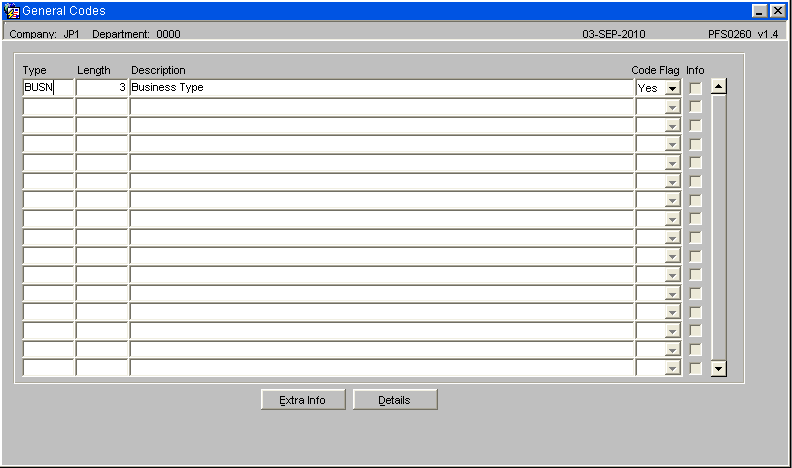
Note that this code and the ‘general codes details’ are ‘once off’ set up codes applicable to all data on the system, regardless of the number of warehouses / owners that utilise the system.
| Field Name | Description | Options | Generic Values |
|---|---|---|---|
PFS0261 – General Codes – Details
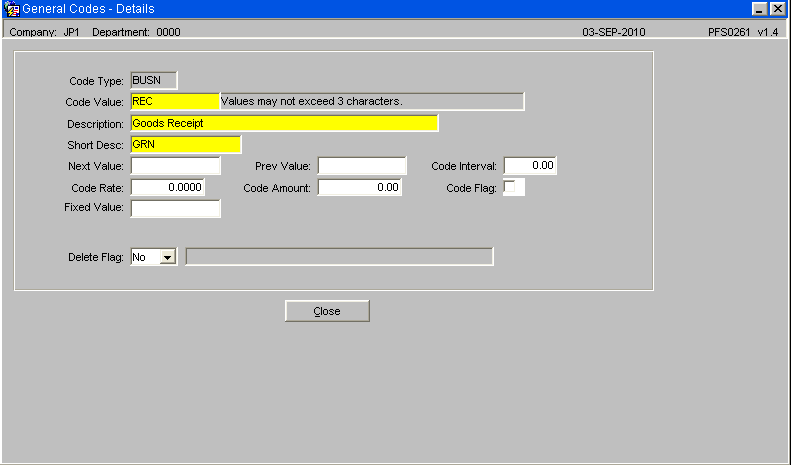
‘Code Value’ set to the pre-defined codes to identify each of the valid BUSINESS TYPE codes given below.
CASN5010 Company Maintenance - Accounts Tab
The following summarises the details that are required:
• Company Registration number • VAT number • Name and Address details for Head Office (HQ) • ‘registered in city/town’ fixed text details for invoice • Late Payment rule – percentage and associated fixed text etc

This information relates to the ‘Head Office’ details for the Company. The code and details used for the Company Accounts and the details that will be printed on each invoice that will be sent to Stock Owners.
The following information is expected for the Schenker operation. - Company Reg. No. = ?? - Place text = ‘Registered in’ (or Swedish equivalent). - Place Registered = ‘??
- The ‘Late payment’ text etc. = These lines and figures will be printed at the top of the invoice. See invoice details and example below.
CASN5060 Currency & Bank Details Maintenance
The following summarises the details that are required:
Note that the following BANK information can be held for any / all currencies used by the company.
• Bank Name • Bank Account number • Payment address • Bank Giro number • Postgiro number • IBAN (International Bank Account Number) • SWIFT code
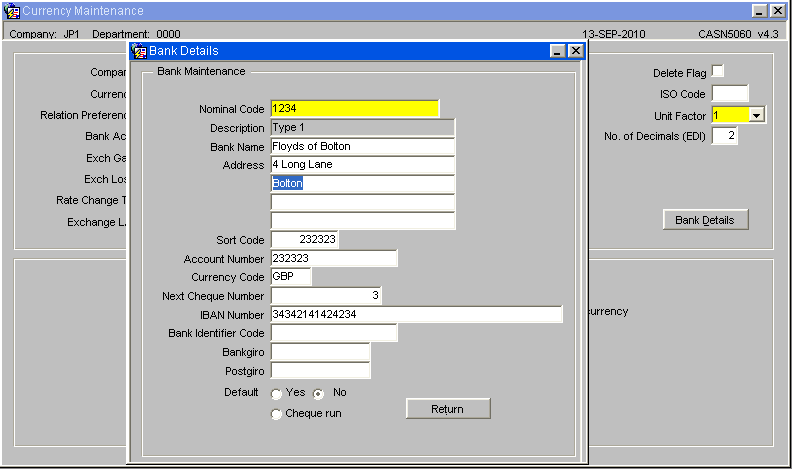
Similarly, this detail relates to the Company Bank details and the various account codes utilised. Separate details are expected for each Currency code that the Company will utilise.
These details will be printed at the bottom of each invoice produced. See sample invoice report that follows:
STKWHSE01A Warehouse Maintenance
Select from ‘Display Charges’ drop down box – Display, Don’t display. Check Owner level,
Set INCD flag for Invoice number format. Choice of Yes / No for ‘Use Check digit’
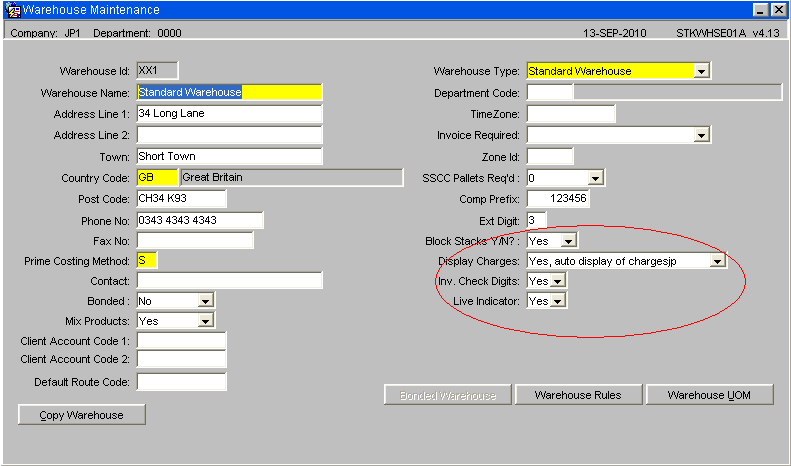
WHS9020 – Warehouse Doc. No. Maint
Enter the Minimum / Maximum / Last number details for
‘type’ of ‘PINV’ for Invoice numbers ‘type of ‘CNINV’ for Credit numbers
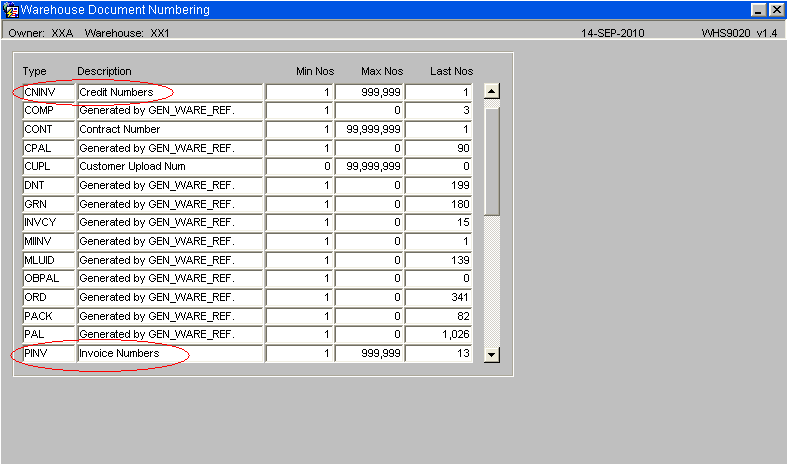
WHS0078 Warehouse Rules Settings
The following ‘WHSE’ level rule is used within the WMS Owner Invoicing processing:
SACF – SAP Account Code format Set flag to ‘Y’ or ‘N’

STS1000 Owner Maintenance
The Charging tab of the Owner maintenance screen is utilised to control / describe the Invoice processing applicable to an individual Stock Owner. It is split into 4 distinct sections
Invoice Details – for Standard Invoice processing

STS1000 Owner Rules Setting
The following ‘OWNR’ level rules are used within the WMS UPM processing:
INST Invoice Sort sequence – ‘P’ or ‘T’ OWRL Owner Reserved Locations (Used with RUL/RPL Charge Codes – See Charge Codes maintenance below)
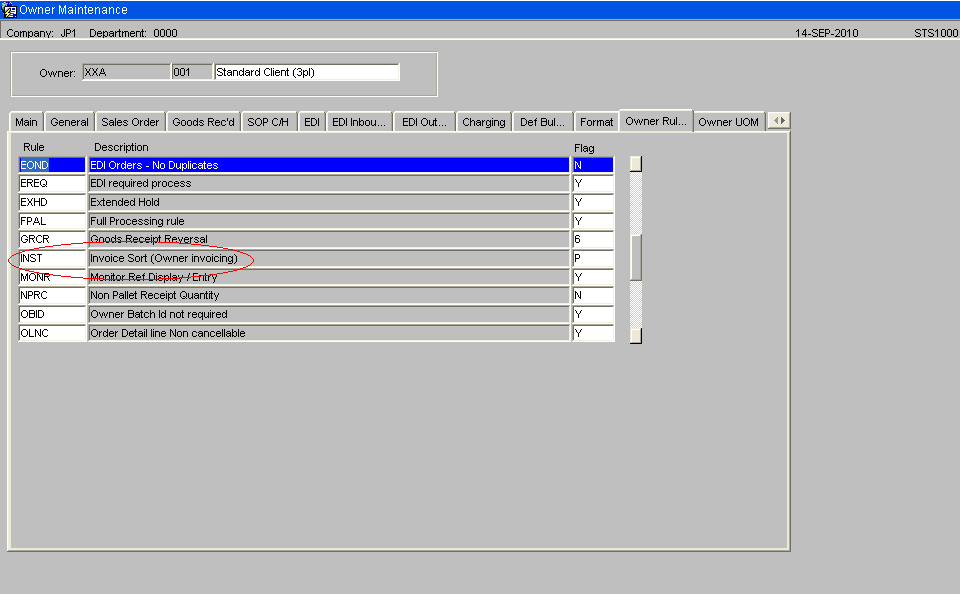
INVOICE PERIOD MAINTENANCE
WHS7130 Invoice Cycle
Used to define type and length of invoicing periods (used for both Rent and Invoice cycles individually).
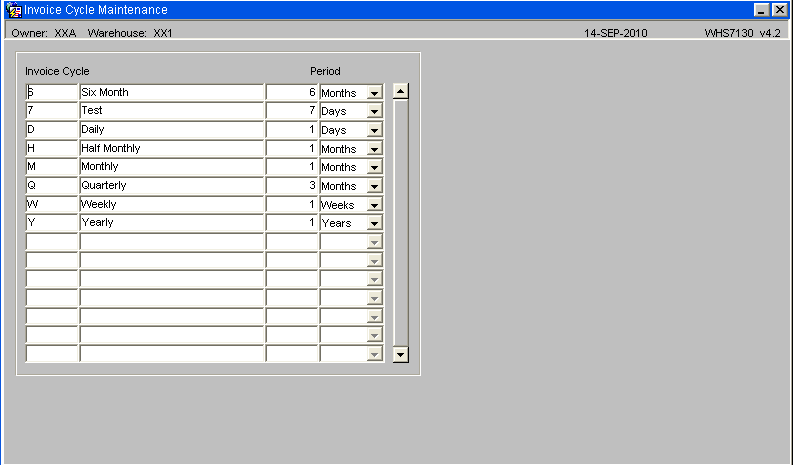
WHS7135 Invoice Cycle Periods Maintenance
Can be used to set up actual dates for future periods for each invoice cycle defined. The system will actually calculate these on an as required basis if they are not predefined by the user.
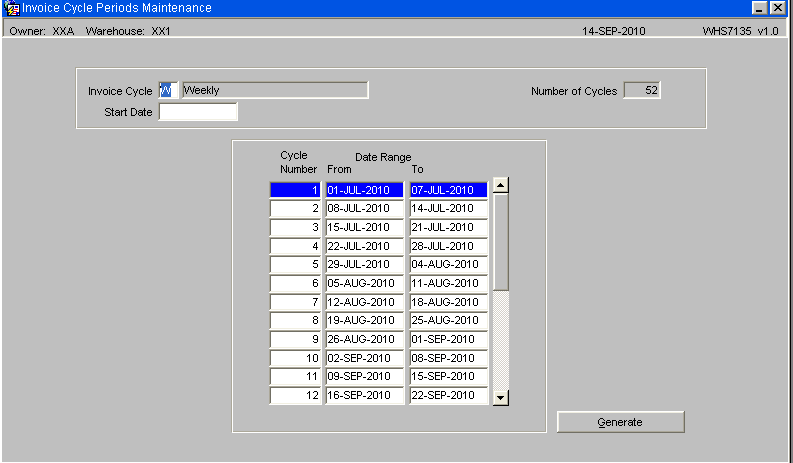
CHARGE RATE MAINTENANCE
WHS9160 Charge Rate Table Maintenance
RATES can be set to define the price to be applied to any UPM Invoice transactions.

WHS9162 Rate Table Copy
This screen will appear when selecting the COPY button on Screen WHS9160.
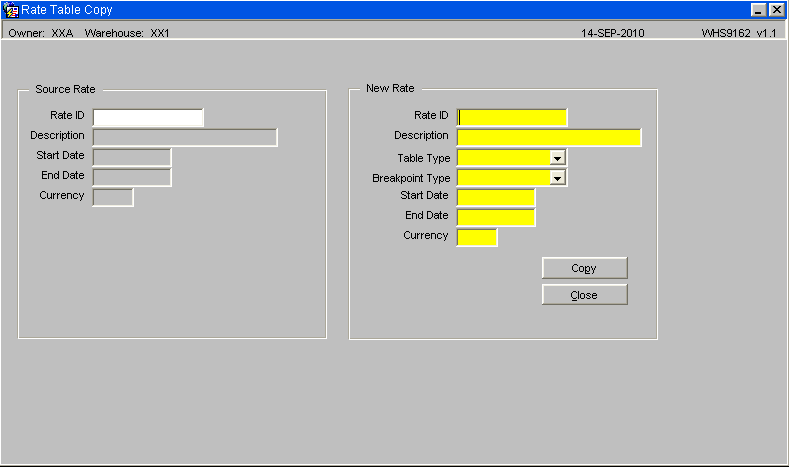
WHS0339 Index Group Information
This screen will appear when selecting the Index Group button on Screen WHS9160. It will not be possible to view this screen from the menu system.